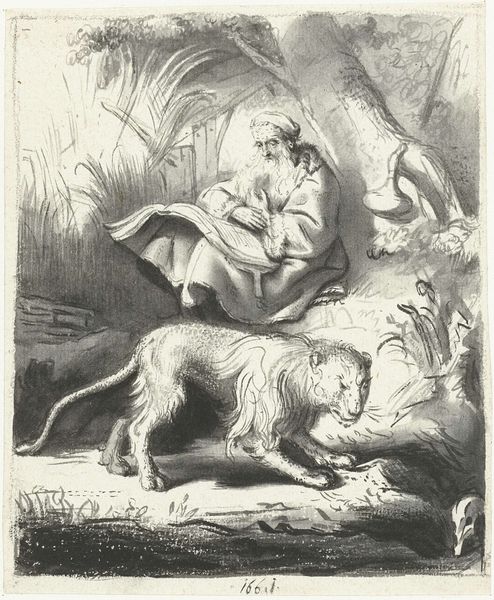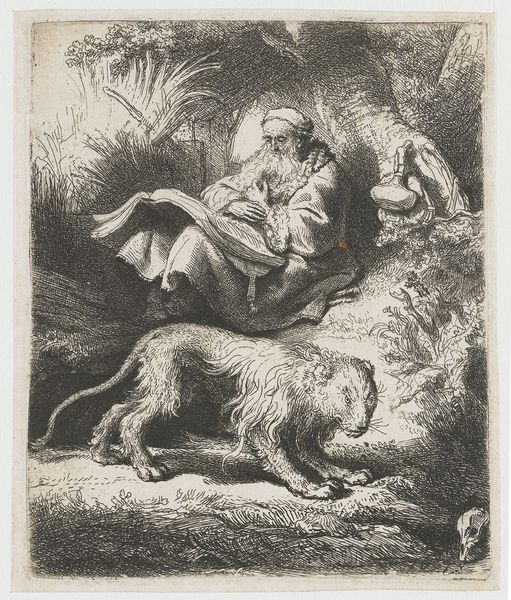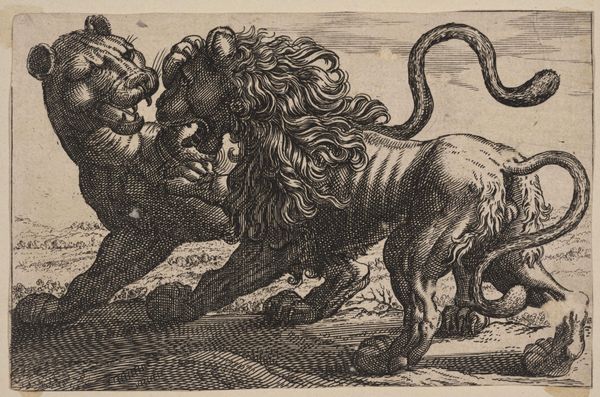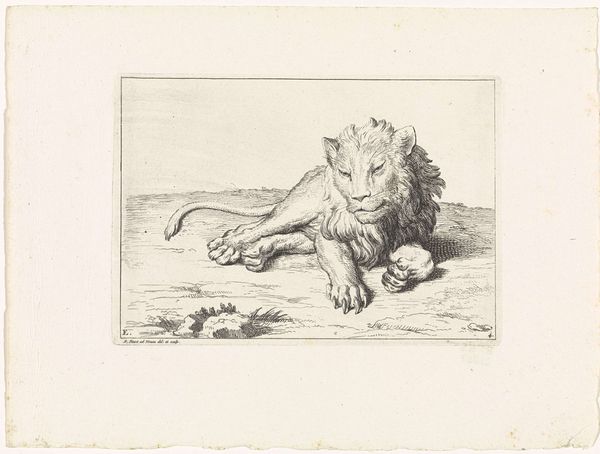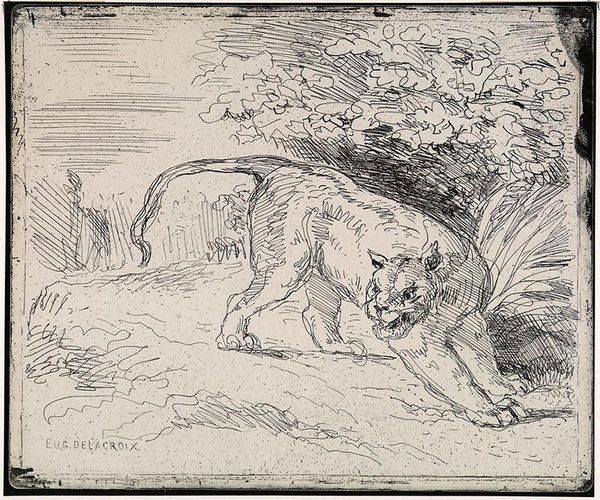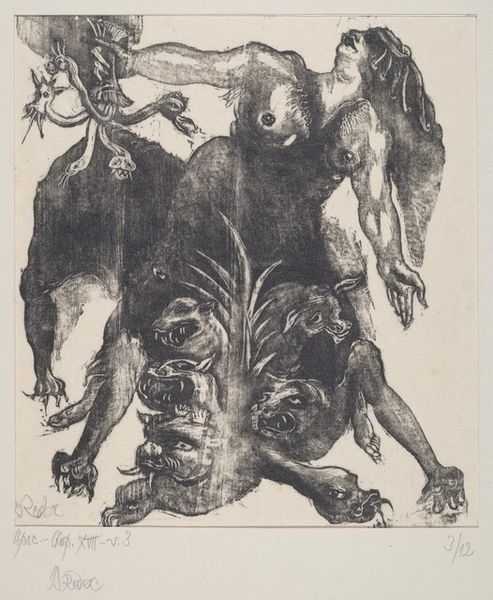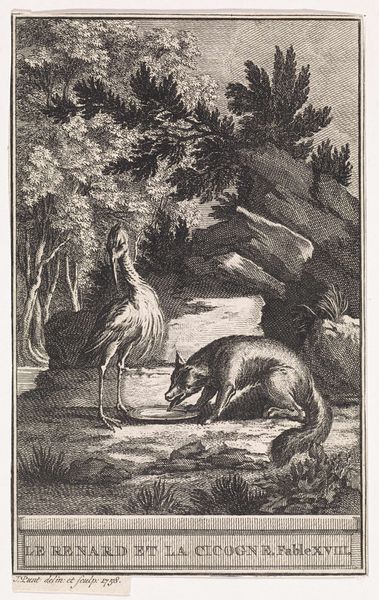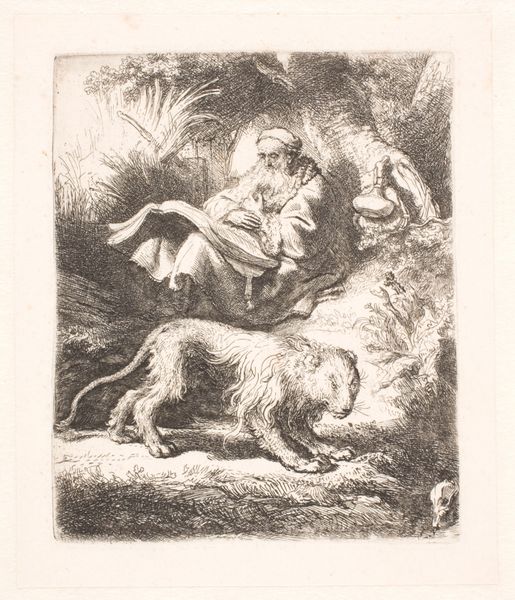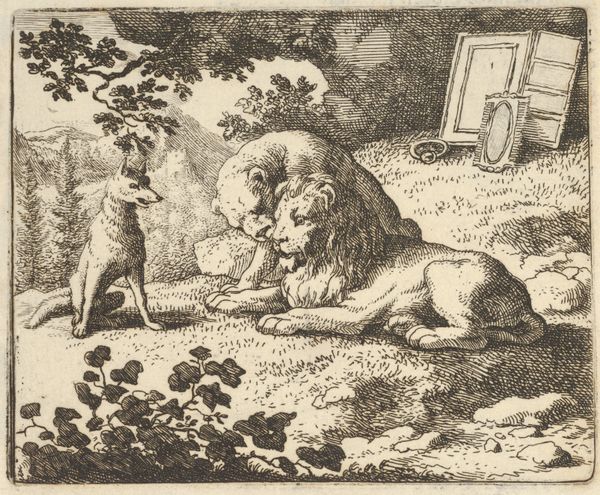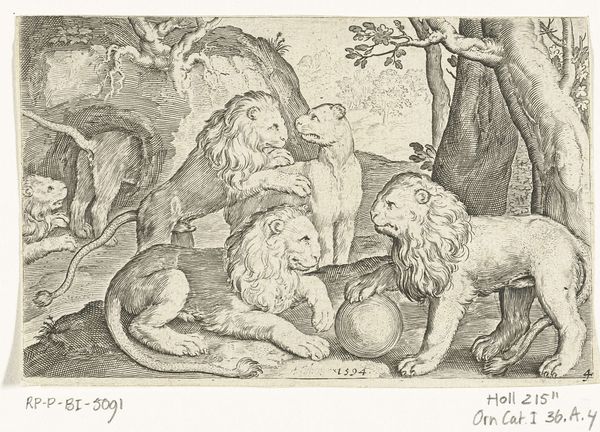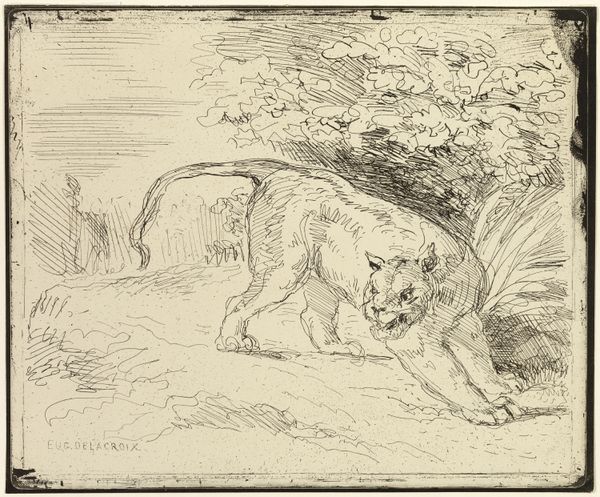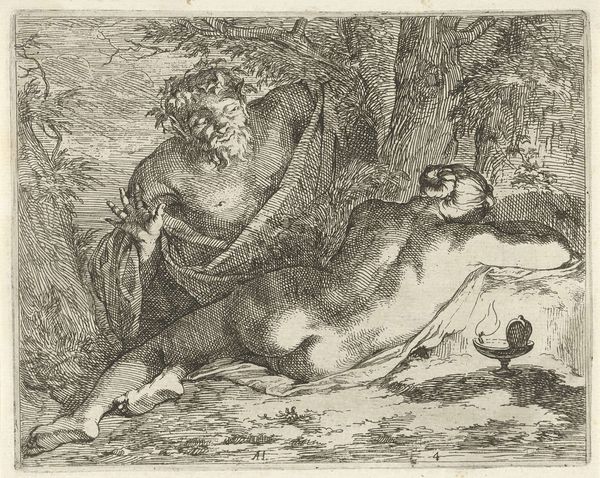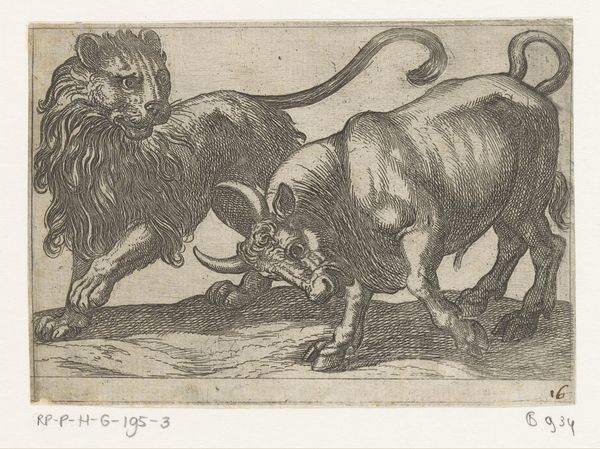
drawing, print, etching, engraving
#
drawing
#
baroque
# print
#
etching
#
landscape
#
figuration
#
line
#
history-painting
#
engraving
Dimensions: height 124 mm, width 96 mm
Copyright: Rijks Museum: Open Domain
This print, ‘Hieronymus lezend’, was made by Thomas Worlidge in the 18th century, using the technique of etching. It's a perfect example of how a seemingly simple process can yield complex results. The material is a copper plate, which the artist covered with a waxy ground, then scratched an image through it with a needle. The plate was then immersed in acid, which bit into the exposed lines, creating grooves. Ink was applied, and the surface wiped clean, leaving ink only in the etched lines. Finally, the plate was pressed onto paper, transferring the image. What is remarkable here is the range of tones and textures Worlidge achieved with this method. The dense foliage and the saint’s robes are built up with a dense network of fine lines, while the lion in the foreground is rendered with a lighter, more open touch. You can see, in this print, how a relatively simple industrial process – etching was often used for commercial reproduction – could be used to create a work of great artistic subtlety. It's a reminder that all art is, in a sense, a form of craft, and that the means of production always shapes the final product.
Comments
No comments
Be the first to comment and join the conversation on the ultimate creative platform.
